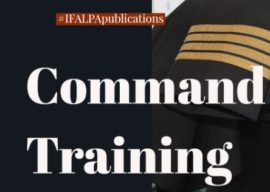
Living the dream – Recommandations to aspiring pilots
The career as an airline pilot still attracts a large number of applicants every year. Aside from free training (public school or training sponsored and paid for by the future employer), aspiring pilots go into massive debt to train despite the very uncertain outlook. While there are now a large number of pilots on the European market, many airlines are taking advantage of this to offer increasingly precarious employment contracts:
Position Paper IFALPA: Training Considerations for Return to Operations
As operations begin to return to normal, there will be a need to safely re-establish compliance with the ICAO Standards as interpreted in each State's regulations. The resumption of operations presents many challenges including the requalification and training of pilots. IFALPA believes pilots returning to the line must be: Qualified, Proficient, and Confident.
Position Paper IFALPA: Command Training
11 décembre 2019 - IFALPA has identified that there is a need across the industry to standardize and enhance command training. In the airline context, the Captain has final authority and final responsibility for the operation and safety of the flight; this requires specific training in the roles and responsibilities as well as enhanced knowledge, skills, and competencies associated with command.
Position Paper IFALPA: Command Training
11 décembre 2019 - IFALPA has identified that there is a need across the industry to standardize and enhance command training. In the airline context, the Captain has final authority and final responsibility for the operation and safety of the flight; this requires specific training in the roles and responsibilities as well as enhanced knowledge, skills, and competencies associated with command.
Position Paper IFALPA: Downlink of pilot selected levels
22 August 2019 - For some time now, several ATS Units (ATSUs) have been using an alert function that is based on data sent by the Enhanced Mode S transponder. This transponder version provides a down-link of various airborne parameters that includes the flight level or altitude selected by the pilots in the altitude window of the associated auto-flight system. If the pilot selected flight level or altitude does not correspond with the cleared level/altitude stored by the controller in the ATM (Air Traffic Management) system, an alert is triggered at the controller station. This warning is used by the controller to verify the pilot selected level/altitude and provides a valuable safety net.
IFALPA Briefing Leaflet
TCAS Pilot training issue

